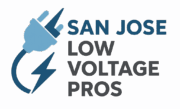How Many Volts is Considered Low Voltage?
Introduction
When people ask, “How many volts is considered low voltage?”, the answer depends on which standard or organization you follow. For some, low voltage might mean the 12V powering LED lights or a car battery. For others, it refers to the 120V or 240V found in residential outlets. The truth is, low voltage has official definitions set by international standards bodies like the IEC, NEC, and OSHA.
This article explains how low voltage is defined, why the thresholds vary, and what it means for safety, applications, and the future of electrical systems.
For professional low voltage services in San Jose, visit San Jose Low Voltage Pros to learn more.
Table of Contents
- The Official Definition of Low Voltage
- Voltage Classification by International Standards
- Low Voltage in Everyday Life
- Extra-Low Voltage Explained
- Why 240V is Still “Low Voltage”
- Safety Risks of Low Voltage Systems
- Common Misconceptions About Low Voltage
- Future Trends in Low Voltage Technology
- Conclusion
- FAQs
The Official Definition of Low Voltage
The term low voltage (LV) is defined by the International Electrotechnical Commission (IEC 60038) and widely adopted across industries:
- Low Voltage (LV): 50–1,000 volts AC or 120–1,500 volts DC
- Extra-Low Voltage (ELV): Below 50 volts AC or 120 volts DC
- High Voltage (HV): Above 1,000 volts AC or 1,500 volts DC
👉 In short, anything under 1,000 volts AC is technically considered “low voltage.”
Voltage Classification by International Standards
Different organizations interpret “low voltage” slightly differently.
- IEC 60038 (Global Standard): 50–1,000V AC / 120–1,500V DC
- NFPA 70 – National Electrical Code (USA): Covers LV wiring for residential and commercial installations, usually at 120V/240V AC.
- OSHA (Occupational Safety and Health Administration, USA): Recognizes low voltage as less hazardous but still potentially dangerous, requiring safety measures.
- European Union (Low Voltage Directive 2014/35/EU): Applies to electrical equipment designed for use between 50–1,000V AC and 75–1,500V DC.
Low Voltage in Everyday Life
Low voltage powers much of what we use daily:
- Homes & Offices: 120V or 240V electrical outlets, lighting, and appliances.
- Electronics: 12V and 24V systems for LED lighting, security cameras, and networking devices.
- Automotive: Car batteries (12V), electric vehicle systems, and charging equipment.
- Telecommunications: Low-voltage cabling for internet, fiber optics, and phone systems.
- Renewables: Solar photovoltaic (PV) panels often generate electricity at low-voltage levels before conversion.
Extra-Low Voltage Explained
Extra-low voltage (ELV) refers to voltages below 50V AC or 120V DC. These are commonly used in:
- LED lighting (12V, 24V)
- USB-powered electronics (5V)
- Smart home devices
- Low-voltage security systems
While safer than standard LV systems, ELV still requires careful handling—short circuits or improper wiring can still cause fires.
Before exploring how many volts are considered low, it’s important to understand what is defined as low voltage.
Why 240V is Still “Low Voltage”
It may sound counterintuitive, but your home’s 120V or 240V outlets fall under the “low voltage” category. This classification is based on engineering standards, not how dangerous it feels.
Even though 240V is labeled “low voltage,” it is still potentially lethal. Safety precautions such as circuit breakers, grounding, and GFCIs are essential in residential and commercial installations.
Safety Risks of Low Voltage Systems
Although safer than high-voltage transmission lines, low voltage can still be dangerous. Risks include:
- Electric Shock: Contact with 120V or 240V can cause burns, nerve damage, or even cardiac arrest.
- Arc Flash: Though less severe than HV, LV systems can still generate arc flashes that cause injury.
- Fire Hazards: Overloaded LV circuits can lead to electrical fires.
Safety Measures:
- Use PPE (Personal Protective Equipment) when working with LV.
- Install ground-fault protection devices.
- Ensure systems comply with NEC and OSHA regulations.
- Hire licensed electricians for installation and repair.
Common Misconceptions About Low Voltage
- “Low voltage is safe.” → False. LV systems can still kill under certain conditions.
- “Low voltage means only DC.” → False. Standards apply to both AC and DC.
- “ELV is risk-free.” → False. ELV reduces risk but does not eliminate it.
- “Only industrial voltages are dangerous.” → False. Residential 120V is one of the most dangerous because of its frequency and accessibility.
Future Trends in Low Voltage Technology
Low voltage will play a central role in:
- Smart buildings & IoT: Devices increasingly run on ELV power.
- Renewables: Growth of solar and battery storage requires LV systems.
- Transportation: EV charging and onboard electronics rely on LV circuits.
- LED dominance: Transition from high-voltage lighting to low-voltage LED systems.
With energy efficiency and safety regulations tightening, expect increased reliance on LV and ELV power systems worldwide.
Some people often ask if 5V is considered low voltage, since it’s common in electronics.
Conclusion
So, how many volts is considered low voltage?
According to international standards:
- 50–1,000V AC or 120–1,500V DC is considered low voltage.
- Below 50V AC / 120V DC is extra-low voltage.
While “low voltage” sounds safe, it still poses serious risks if not handled correctly. From powering homes and cars to enabling renewable energy and smart devices, low voltage is the backbone of modern life—but it must always be respected.
